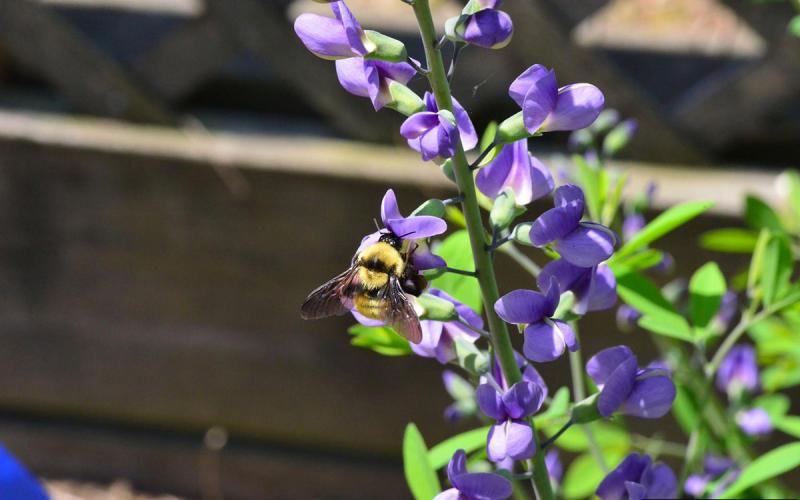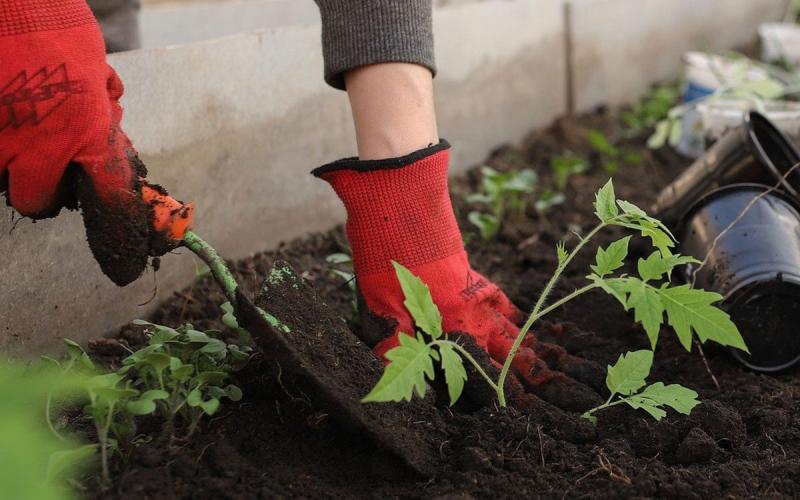About Baptisia

Baptisia (Baptisia australis) is an herbaceous perennial known for its hardiness and for its early-Spring blossoms. Its other common names include False Indigo, Blue Indigo, and Wild Indigo. The plant is native to the Eastern and Midwest United States. Baptisia are tolerant to drought, heat, poor soil conditions, and are deer resistant. Most Baptisias are large plants that can reach up to four feet in height, with about three-foot spread. They do best in full sun and will tolerate dry conditions after they are established.
Early in the Spring, Babtisias begin to grow with the first signs of their new shoots pushing up out of the soil. These new shoots are fun to watch, because they grow quickly and often don’t have any leaves until they grow to several inches tall, and they almost look like small asparagus stems when they first start to grow. The young stems are smooth and may range in color from dark green to a lighter blue-green color.
Flowers

Baptisia blossoms are typically a deep-blue color, but may also be yellow, pink, or white. The flowers sprout on upright, spike-like stems (racemes), with 4 or 5 petals. The flower spikes can range from 12 inches to 24 inches in length. Large, mature Baptisia plants may support close to 100 spikes of blossoms. Blooms typically last 3 to 6 weeks. The leaves of the Baptisia plant have three leaflets (trifoliate), which grow alternately along the stem. They range in shape from oval to oblong and vary in color from yellow-green and blue-green to gray-green.
After the flowers fade, they are replaced by small seed pods that look like small, rounded pea pods. These pods continue to develop up to about 2 inches in length and about ½ inches in diameter. They are usually a lighter green color throughout most of the Summer but turn dark-brown to almost black in the Fall. Then one of the most interesting aspects of the plant becomes apparent: In most varieties, if the stem with the pods is shaken, one can hear the seeds bouncing around inside, making a pleasant rattling sound that is great for kids and adds a little interest on a windy day. One can cut the stems and use them in a dried-arrangement or alternatively leave them on the plant to add some interest to the garden during Winter.
Selection and Care

There has been a lot of interest in Baptisia in recent years, with several new varieties becoming available. The new cultivars have the advantage of being a little more compact and consequently can stay upright all season long. Sometimes, by mid-Summer the common species, Baptisia australis, will topple unless it is supported. The newer varieties, however, seldom have this problem.
Baptisias can be grown in gardens as individual specimens, or along a border with several plants in a row. They are a host plant for several species of butterfly and thrive in cottage gardens. They are generally immune to pest problems and are long-lived plants that are great additions to nearly any garden.
References and Resources
- Baptisia (Baptisia False Indigo Wild Indigo), NC State Extension.
- Baptisia (False or Wild Indigo), Clemson Cooperative Extension.


